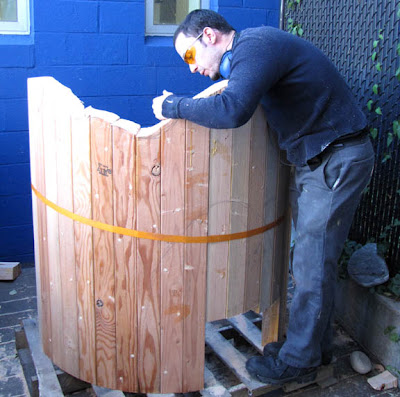Your 3-year-old can recognize the first letter of her name when she sees it in print or maybe hit the right letters on the electronic game when the recorded voice says “B… ball… B.” You think she’s pretty smart. She is, but not because she’s beginning to recognize letters. Let’s face it – chimpanzees can learn to do that. Where you can really see and celebrate her developing literacy skills is in her pretend play.
Children’s capacity for pretend, or fantasy, play begins very early and is marvelous in its creativity. When children pretend, their thinking is fluid, flexible and amazingly responsive to new information, ideas and resources. Renowned educator Vivian Gussin Paley recorded this kindergarten dialogue in her 2004 book, A Child’s Work: The Importance of Fantasy Play:
“Someone has to be the wolf,” Red Riding girl said, putting on the red velvet cloak.While practicing social skills like cooperation and compromise, children create their story’s plot, characters, even backstory. They understand the elements of storymaking well before they read or write. And of even more importance, they internalize the rich complex world of stories – and are primed to become enthusiastic readers.
“I’m not the bad guy,” argued Erik, in a vest and tie.
“You’re really the dad hunter but you pretend huge teeth.”
“Like a wolf? See it bited me so my teeth got stronger like a wolf.”
There is no research showing that children who learn to read by age 5 have stronger literacy skills long term than children who begin reading at 7. In fact, recent research by Sebastian Suggate of University of Otago, New Zealand, demonstrates there is no difference. Suggate theorizes that “…the most important early factors for later reading achievement… are gained without formal reading instruction… play, language and interactions with adults… prepare the soil well for later development of reading.”
Given enough unstructured screen-free time, children will naturally engage in pretend play with other kids and by themselves. Young children will often invite you – their grown-ups – into the play. Accept the invitation and follow their lead. It’s fun and it’s really interesting to observe their imaginations in action.
You can let them know you value their pretending by taking it a step further. Keep a box of dress-up clothes within easy access. Capes, pieces of glittery fabric, silly hats and old Halloween costumes inspire fantasy play.
Listen to them as they play and write down their story. For example:
Little Red Riding Hood walked through the forest. Suddenly she saw a wolf. She started to run away.Read the story to them and ask them to add to it and illustrate it.
“Wait,” he said. “I’m not really a wolf! I’m your dad!”
“But you have huge teeth!” said Red
“Because a wolf bit me and my teeth got huge and strong,” said dad, “but I won’t bite you!”
Or tell their stories back to them. On vacation last summer my grandchildren spent days on an elaborate fantasy involving an elf, a princess and a ninja. At bedtime I began the story, “Once upon a time a princess lived in the forest with her best friend the elf. One day a ninja came to the forest…” Of course the kids corrected and embellished and wanted stories about the ninja, princess and elf again and again.
Pretend play is a literacy activity. For that reason, the Children’s Museum’s team incorporated a lot of pretend play elements in its design for the new Chace Children’s Discovery Library at Providence Public Library. Raise readers by reading them books and telling them stories – and by allowing plenty of opportunity to make their own stories.



























